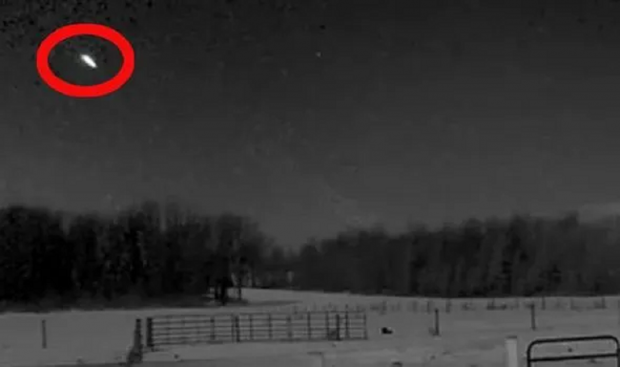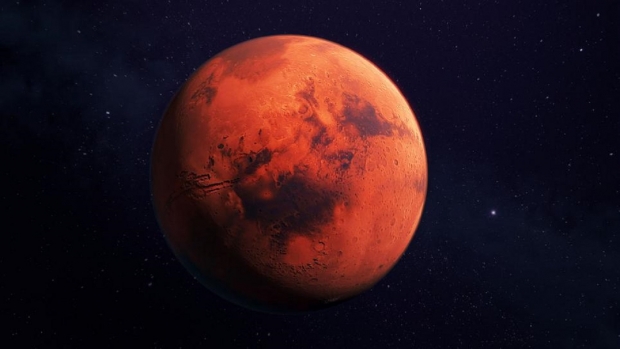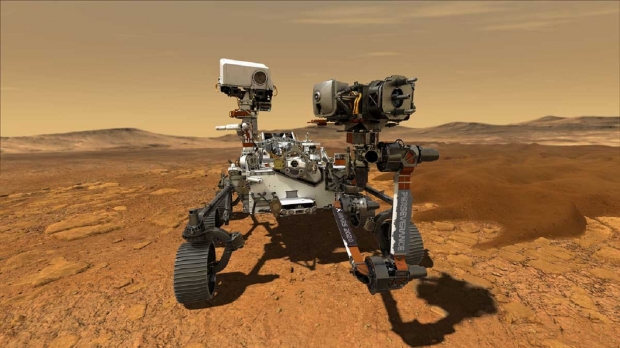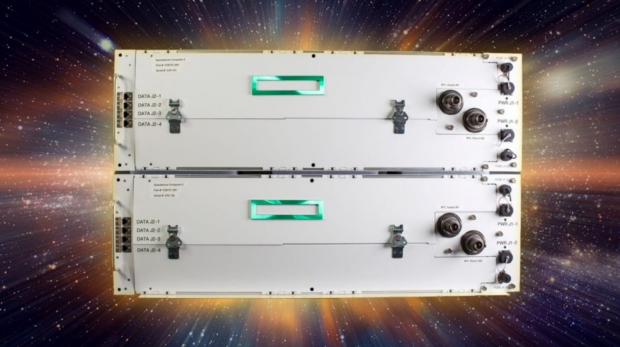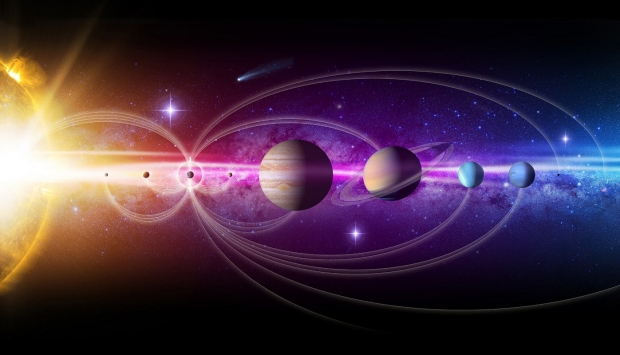Science, Space, Health & Robotics News - Page 337
Scientists confirm the existence of this eye-catching space phenomenon
A team of scientists from multiple different countries have finally confirmed the existence of an eye-catching space phenomenon.
The findings from the team of scientists were published in the journal Nature Communications back in February, and according to the results, the team was able to prove the existence of space plasma hurricanes. According to Mike Lockwood, a space scientist at the University of Reading and co-author of the study, "Until now, it was uncertain that space plasma hurricanes even existed, so to prove this with such a striking observation is incredible."
The researchers confirmed the existence of a space hurricane that was 1,000 km wide, which is about the same distance as driving from New York to Detroit. A space hurricane isn't like a hurricane on Earth but is somewhat similar in how it works. Instead of water, space hurricanes are a swirling mass of charged electrons, and according to Lockwood, they are created by "unusually large and rapid transfer of solar wind energy and charged particles into the Earth's upper atmosphere."
Continue reading: Scientists confirm the existence of this eye-catching space phenomenon (full post)
Watch this large meteor that was 'too close' burst into a fireball
A security camera has captured a large meteor entering the atmosphere over southern Canada and the northern US.
According to Express.co.uk, witnesses that saw the meteor enter the atmosphere said that its tail was bright green, which is an indicator that the meteor contained iron and magnesium. When the meteor entered the atmosphere, it began to burn up its properties, which is what caused this reported green glow to appear.
The International Meteor Organisation (IMO) reported more than 300 people saying they saw a meteor, some of the reports stated that they saw the meteor hit land. AJ said, "I was surprised how large, bright and close to Earth it seemed. It was very clear and had a glowing burning appearance." Jenna said, "As it travelled over the Earth it looked like it was getting too close for comfort!" To watch a video of the meteor, check out this link here.
Continue reading: Watch this large meteor that was 'too close' burst into a fireball (full post)
These images show human garbage being scattered all over Mars
It was only a few weeks ago that NASA successfully landed its brand new rover on Mars. Perseverance has touched down and is snapping incredible images.
Engineers are currently running multiple tests for each of the instruments equipped to Perseverance. While these tests are being conducted, a close-by vehicle has snapped some sneaky shots of Perseverance.
The ESA-Roscosmos Trace Gas Orbiter, which is a satellite apart of the ExoMars mission between the ESA and Russian space agency, snapped some shots of Perseverance sitting in the Jezero Crater only days after it touched down. The descent of Perseverance was technical and required many different parts of discardable machinery to ensure it landed safely.
Continue reading: These images show human garbage being scattered all over Mars (full post)
You have never seen the surface of Mars like you have in these images
On February 18th, NASA successfully landed its Perseverance rover on Mars, and now the rover is sending back astonishing images of the barren Red Planet.
Mars has never been captured like it has in these images, and just last week, NASA released a few images that Perseverance snapped while performing instrument testing. The images were captured using the rover's Mastcam-Z camera system and show the barren 28-mile wide Jezero Crater where it landed.
Researchers believe that this crater was once home to a river delta billions of years ago, which has led researchers to think that microbial life still might remain there, hence rover landing in this location. Jim Bell, the principal investigator for the rover's Mastcam-Z instruments, said, "Mastcam-Z will be the main eyes of NASA's next Mars rover." For more information, check out this link here.
Continue reading: You have never seen the surface of Mars like you have in these images (full post)
Watch NASA's rover land in HD, and its first 360 view of Mars surface
If you happened to miss the news, NASA officially touched down on Mars with its Perseverance rover last week.
Last week, NASA landed its Perseverance rover and Ingenuity helicopter on the surface of the Red Planet, and now we have a video posted to Bloomberg Technology YouTube channel of the rover landing on the surface. The video can be found below.
Now, the Perseverance rover has captured its first 360-degree view of the Red Planet's surface where it landed. NASA explained that the video was captured with the rover's color Navigation Cameras, or "Navcams". For those that don't know, Perseverance is equipped with 19 cameras located all over the rover, which makes Perseverance the most equipped Mars rover to date when it comes to cameras. For more information on this story, visit this link here.
Continue reading: Watch NASA's rover land in HD, and its first 360 view of Mars surface (full post)
NASA's Perseverance rover safely lands on Mars: 'touchdown confirmed!'
NASA has successfully landed its Perseverance rover on Mars, with ground controllers at NASA's Jet Propulsion Laboratory in Pasadena, California celebrating the news just hours ago.
The Perseverance rover took just over 11 minutes to land on the Red Planet, with NASA reaching the tip of Mars' atmosphere at 3:48PM EST (8:48PM GMT). It was at this point that NASA refers to as the "seven minutes of terror" which is the time between the entry, descend, and landing of the Perseverance rover.
Once the rover had landed on the surface of Mars, it took 11 minutes and 22 seconds for the signal of its confirmed landing to transmit between Mars and back here to Earth. That journey is pretty long though, at close to 300 million miles... a journey that NASA started back on July 31, 2020.
Continue reading: NASA's Perseverance rover safely lands on Mars: 'touchdown confirmed!' (full post)
Microsoft + HPE server PC installed on International Space Station
Hewlett Packard Enterprise (HPE) has teamed with Microsoft on getting a PC onto the International Space Station connected to Azure. HPE has now sent their new Spaceborne Computer-2 system up and onto the ISS.
The new Spaceborne Computer-2 system will be connected to the cloud and into Microsoft Azure, through NASA and HPE ground stations. What this new Spaceborne Computer-2 system allows astronauts on the International Space Station to do is work on data processing up on the ISS, versus having to send it back down to Earth.
The news release for the Azure connection says: "Astronauts and space explorers deserve access to the best cloud computing technologies and advanced processing at the ultimate edge. Sometimes analysis needs to be done immediately at the edge where every passing moment counts, and other times the analysis is so massively complex that it can only be performed with the power of the hyperscale cloud".
Continue reading: Microsoft + HPE server PC installed on International Space Station (full post)
Scientists use Go Pro to go 4,000 feet below ice to find alien stalk
Researchers have made a discovery about what kind of conditions life can still live in as experts drilled deep into the Antarctic ice shelf.
The discovery of this new life has challenged the assumption that life cannot live in the conditions below the Filchner-Ronne ice shelf. Scientists from the British Antarctic Survey drilled through 2,860 feet of ice, and used a Go Pro to make the discovery, which also wasn't intentional. Huw Griffiths, one of the researchers who made the discovery, said in a Twitter video, "The area underneath these ice shelves is probably one of the least-known habitats on Earth."
Griffiths also said to The Guardian, "Never in a million years would we have thought about looking for this kind of life, because we didn't think it would be there." The researchers discovered the stalked animals can be found in the image below outlined in red. For comparison, the sponges have been highlighted in white, and as you can see, the animals in red have long stalks, and the sponges don't.
Continue reading: Scientists use Go Pro to go 4,000 feet below ice to find alien stalk (full post)
You have never seen Jupiter like you have in this incredible photo
NASA is no stranger to capturing absolutely stunning images of planets in our solar system, and this time around, the space agency is highlighting Jupiter.
Jupiter is the largest planet in our solar system, and being a gas giant, the surface can show off some incredible storms with some beautiful combinations of colors. Since 2016, NASA's June spacecraft has been orbiting Jupiter, and throughout that time, the satellite has managed to capture some stunning photos of the distant giant planet.
On the NASA website, NASA has detailed what we see in the image that can be found here. NASA says that "scientists discovered that Jupiter's powerful atmospheric jet streams extend far deeper than previously imagined." Additionally, NASA also points out the Great Red Spot, which can be seen on the horizon. If you are interested in reading more about this story, visit this link here.
Continue reading: You have never seen Jupiter like you have in this incredible photo (full post)
Elon Musk made the Starship nose 'more pointy' because of The Dictator
Elon Musk has recently been featured in an episode on Joe Rogan's podcast, and within the first five minutes of the interview, Musk reveals something quite amusing about the Starship rocket design.
Elon Musk has been hot in the news lately with all of his Twitter posts about DOGE coin, and now Musk has appeared on The Joe Rogan Experience podcast, where he talked about many different topics over a few hours. To kick the podcast off, Musk asked Rogan if he had ever seen the movie The Dictator starring Sacha Baron Cohen, Rogan said, he "never saw that one".
Musk continues to explain a scene in the movie where Sacha Baron Cohen, playing the character Aladeen, a brutal dictator. A team of researchers is building Aladeen nuclear weapons, and when shown what the researchers have built, Aladeen says that the missile "needs to be pointy". Musk says that the reason the SpaceX Starship nose is pointy is because of this scene.
Continue reading: Elon Musk made the Starship nose 'more pointy' because of The Dictator (full post)



